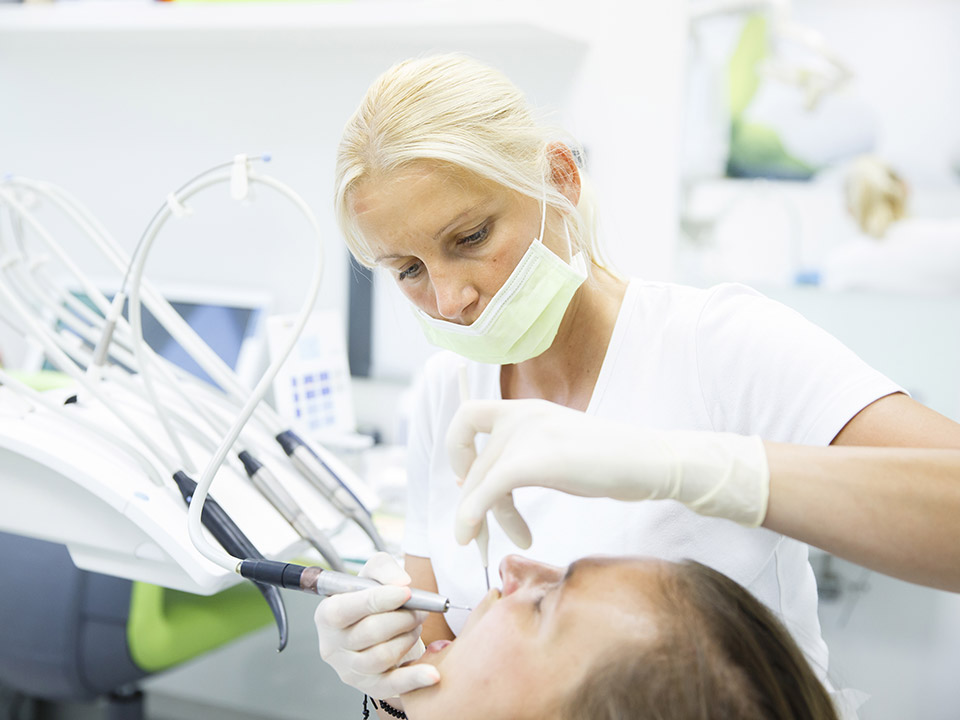On the dentition and its surrounding structure, the dentoalveolar includes injuries caused by external impact. A simple contusion of the tooth to its total dislocation of the alveolar bone of these injuries range, called tooth avulsion, a rare type of dental trauma. For the avulsion of the tooth, a significant amount of force is usually necessary. For the avulsion of the tooth, such as alveolar bone fracture and gingival contusions in other injuries to the surrounding structure, should be suspected. The avulsed tooth are crucial factors that will guarantee a good prognosis, replantation is the treatment of choice time management and appropriate storage. Using a combination of antibiotics and corticosteroids, antiresorptive therapy is a newer technique that prevents the common inflammation that avulsed teeth experience after replantation.
Procedure
For a patient with an avulsed tooth, splinting and systemic antibiotics are also included in the treatment regime. The tooth will be evaluated clinically and radiographically to confirm tooth vitality and rule out root resorption or ankylosis, finally, follow-up appointments utmost importance. Dental trauma includes falls, cycling, full-contact sports, traffic accidents, and assault, the most common causes of dentoalveolar. The protuberant upper teeth, overjet, anterior open bite, malocclusion, mouth breathing, and incompetent lips are the anatomic features that increase the likelihood of dentoalveolar trauma. The periodontal ligament cells remain viable on the root surface but the periodontal ligament fibers are torn when a tooth is avulsed. Small and localized areas of cemental damage are usually seen due to the root scraping against the socket.
Avulsed Tooth and History of Dental Trauma
The mechanism of injury can point to other dental injuries, a history of trauma to the tooth will reveal tooth avulsion. The tooth is primary or permanent the storage medium in which the tooth had been placed, a history of trauma to the tooth will reveal tooth avulsion. The tooth fragments as these can prevent tooth replantation and evaluating the surrounding structures for other injuries such as lacerations, gingival contusions, and bone fractures, physical examination involves assessing the tooth socket for foreign material. CT scans, intraoral radiographs, and extraoral including imaging modalities can aid in evaluating dental, alveolar, and surrounding fracture.
Although it is not always possible, the treatment of replantation is by choice. An organized treatment plan is essential to increase tooth survival, the appropriate management of an avulsed tooth within the first 30 minutes. To minimize growth retardation of the alveolar bone which will be needed to place a dental implant in the future, the treatment first aims to preserve tooth vitality or maintain a functional tooth in its alveolar socket. Milk, saline, saliva, slow down cell death in the periodontal ligament (PDL) of the root in an isotonic solution is storing the avulsed tooth. The storage in a solution is only a temporary but effective way of managing the tooth before replantation, however, PDL cell death is unavoidable. Storage in a short time in an isotonic solution has proven to provide the same or even higher healing results than replanting the tooth immediately. Antiresorptive therapy involves soaking the avulsed tooth in a storage solution containing antibiotics. It is believed to prevent inflammation caused by necrotic cells and microbial contamination by antiresorptive therapy.
Tooth Replantation Process
Tooth replantation applying firm pressure to the socket, the tooth should be aligned anatomically and replanted. If the extraoral dry time is less than 30 minutes most teeth can be successfully replanted. After this period the survival probability of the tooth diminishes the periodontal ligament cells are irreversibly damaged after 30 to 60 minutes. Splinting of post replantation procedures, once the teeth have been replanted, they should be immobilized for 10 days with a titanium trauma splint. Splinting immobilizes the replanted tooth and allows the damaged periodontal ligament fibers to reestablish connection from the alveolus to the cementum. Where the tooth will be clinically and radiographically examined, the splint must be removed after 10 days. After removing the splint, the tooth’s mobility is checked and a pulp vitality test should be performed, preferably pulse oximetry or electric testing. If the tooth is non-vital, a root canal treatment is indicated since there is no probability of revascularization.
Recovery Process and Complications
When the dry time is more than 60 minutes, the remaining PDL should be removed as it will become a stimulus for continued inflammation that accelerates infection-related resorption and ankylosis. The remaining PDL can be removed by gentle scaling and root planning, soft pumice prophylaxis, gauze, or soaking the tooth in 3% citric acid for 3 minutes. Fluoride treatment must follow this procedure as it slows ankylosis and reduces the risk of resorption.
Immature teeth where the root has not yet wholly formed have a greater chance of revascularization after soaking in doxycycline. Primary teeth should not undergo replantation as this can damage the underlying permanent tooth germ.
The main complications secondary to replantation of avulsed teeth include tooth discoloration, fistulas, inflammatory root resorption, infection, apical periodontitis, ankylosis of the root to the alveolus, pulp canal obliteration, and pulp necrosis ultimate leading to tooth loss. Tooth avulsion is associated with a high risk of loss of vitality, especially if the apex has completely developed.







